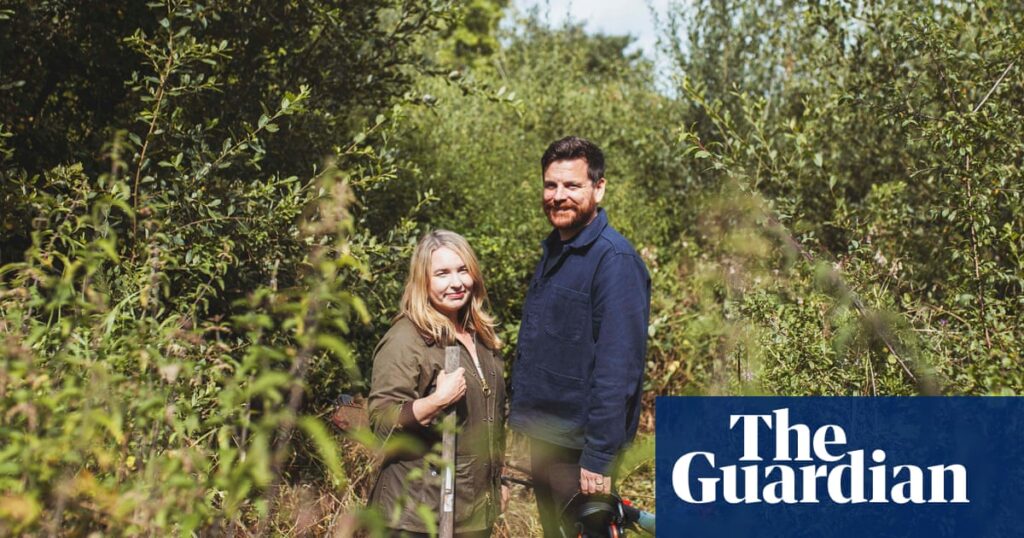As you drove south, the scenery in County Cork became more beautiful. From Gougane BarraThe road leads through the old rebellious country and deep forest where foxgloves grow along the mountainside. Bantry House – a magnificent estate overlooking a lovely bay – marked our path toward Ballydehob, West Cork’s boho village just north of the Mizen Head peninsula.
Native is a new eco-guesthouse located just a few minutes from the village. Didi Ronan, who previously worked in the public policy industry and music industry, and her husband Simon (who owns the sustainable landscape architecture studio) are the brains behind Native. SRLA), the aim was to create somewhere that has a positive impact on both the environment and local community.
Previously a derelict farmhouse, the chic three-bedroom B&B, set in beautiful gardens, celebrates Ireland’s craft heritage, too. From the communal living room – with its art books and antique maps – to the timber-clad garden sauna, every element is carefully considered. The bedrooms lean into a modern-meets-vernacular aesthetic, with muted tones and tactile textures. Ours opens on to a private patio, and above the bed are hundreds of vintage National Geographic magazines – collected by Didi’s grandmother – arranged in artful symmetry across a bespoke bookshelf.
The couple shares their vision over dinner. They order a crab risotto and farm greens. Simon was inspired by an epiphany he had when designing high-end resorts in the Maldives. When the real cost of tourism to Indigenous land and the environment became undeniable, the couple began dreaming of new hospitality. “Could an hotel tread lightly and also give back to land?” They asked themselves.
The sustainability of the project is baked in, right from the start. Instead of conventional plaster, Didi chose hemp – a more natural alternative – while Simon ensured that every existing material was reused, from the original foundations to the retaining walls. Three new cabins are opening this summer and aim to be “the gold standard in sustainable architecture”. They’re made out of local timber, wood wool fibre, hemp, and other natural materials. The newly renovated barn will be a hub for creative workshops, natural wine samplings, and collaborations among foragers and crafters.
But perhaps most impressive of all is that 20% of Native’s profits go directly to their 75-acre rewilding site nearby – a living laboratory of native tree planting, invasive species removal, and ecological education. Guests are encouraged to visit – and the next day we drive 10 minutes along winding roads and walk across fields, their dog, Peig, darting ahead through rushes and briars, to learn more. “First, you eradicate invasive species. Simon says, “First, you need to eradicate invasive species. Then, you can conserve what you already have, protect the land from overgrazing, then you plant native trees that will help you along.”
On the ridge the land opens out into a sea of scattered islands. Roaringwater Bay lies below us, and behind the remains of a cottage. Didi gestures towards a patch with young trees. “The problem is huge – biodiversity, climate – but the solution’s simple: trees, wetlands, space.”
We walk down to a man-made lake where moorhens and dragonflies skitter in the reeds. We meet there Sam KeaneForager and artist, who offers immersive coastal tours that guests can book. He demonstrates the healing powers of seaweed, as well as the taste of other ocean plants.
Native is a short walk from Ballydehob. A village of a few hundred people with many pubs. Later that day, I wandered the streets and absorbed a different energy: social, human. This place is not only big, but also full of spirit. At Levis Corner House The Wednesday market spills onto the street. Levis, the heart of a vibrant community, is a pub and concert venue, which hosts live performances behind an old shop counter. It’s a village living room.
A vibrant art scene also exists in the city. Christa Reichel, Nora Golden and other potters helped to start the local craft scene in the 1970s. You can still see their work in places like The Working Artist Studios Main Street is a hive of activity, with artisanal food, ceramics, textiles, and pubs crammed in between.
The village is hard to leave. But the next morning, I decided to explore more of the surrounding area. At the edge of the town, a 12-arch viaduct that was once part of the old rail line crosses the estuary. Along the hill, pastel shopfronts curve. From Ballydehob, the 17th-century Butter Road takes you to Schull, an attractive harbour village. I walk along a quiet country road and green lanes. It’s a beautiful route with hedgerows and views of the sea. Butter churns from West Cork were once transported to the market on this route.
Mizen Head is a peninsula with a tapering shape where the past never seems far away. Close to the roadside and overlooking Bay, a Neolithic portal grave is accessible. I take a path up to Three Castle Head. Fields are replaced by a jagged coastline and steep tufty mountains that rise and drop in tandem with Atlantic. The hike begins slowly, and then quickly.
The ruins of the 15th century castle are revealed. They consist of three weather-beaten, crumbling towers. From afar, the ruins look like they were carved out of rock. The indigo bay is nestled within a lush green valley. The road rises and falls again as we drive back to the car. Mizen Head Signal Station, The most southwesterly part of Ireland. Footbridge leading to Fastnet Signal Station spans sheer cliffs and is cinematic in size.
The next evening, in Ballydehob I discovered ChestnutRob Krawczyk, the chef of, has transformed former pub walls into a restaurant with a Michelin star. His tasting menu captures season’s flavours with preserved, foraged, and grown. Everything is perfect and fits the story I have uncovered about this progressive, environmentally conscious, quiet radical corner of West Cork. As Didi put it, “Sustainability is only part of the story – regeneration is the next step.”
The trip was sponsored by Native. Double rooms start at €200 A night B&B (two-night minimum). Exclusive Hire of Vehicles Guesthouses are places to sleep six, from €650 per night, and garden sauna experience €75. Cabins, sleeping two, from €350. For more inspiration, visit ireland.com


